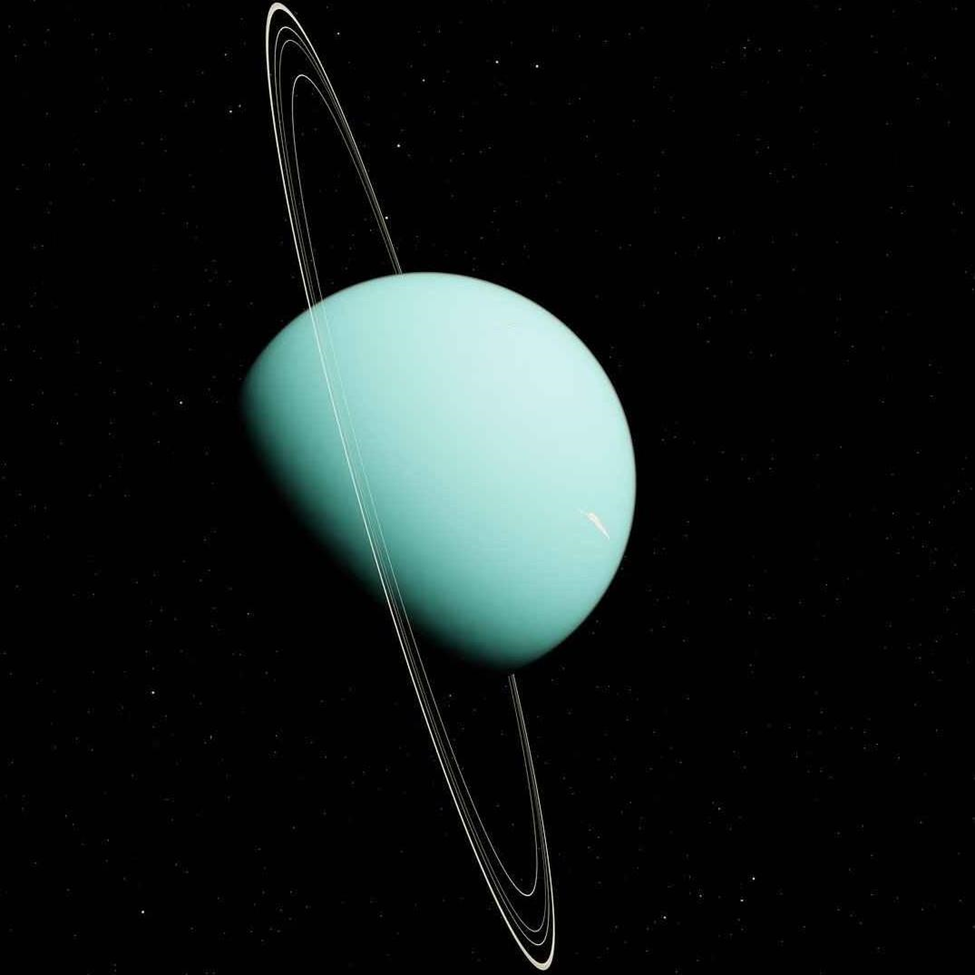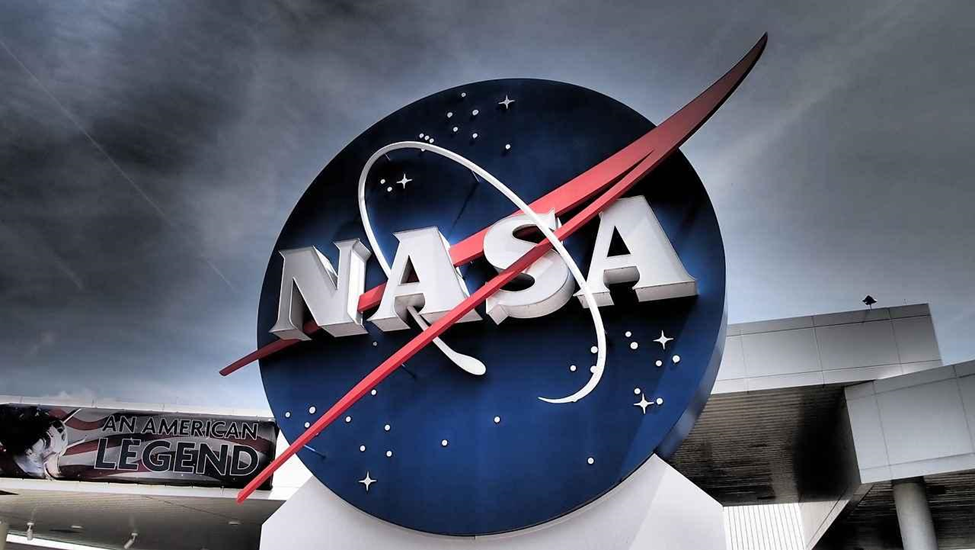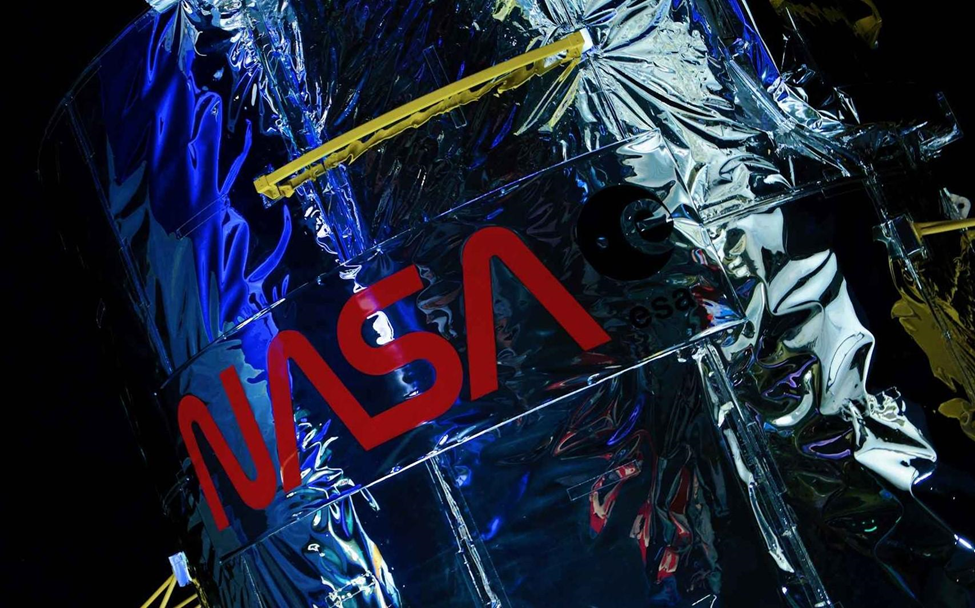Uranus, the seventh planet from the sun, has long been a celestial mystery. In 1986, NASA’s Voyager 2 spacecraft flew by the planet. This gave the scientist their first chance to peek closely into the solar system’s seventh planet and gather discoveries, which provided astronomers’ contemporary understanding of the strange,“ice giant” world.
A recent study in Nature Astronomy reveals that the planet was experiencing a rare solar wind enigma at the time of the flyby, which led to misleading and skewed observations. However, new research into Uranus and its characteristics is challenging old understanding, indicating that we might be wrong about the planet.
Uranus: A Tilted Mystery
Uranus is a unique, icy-ringed planet in the outer reaches of our solar system. It is one of the coldest among the planets. One of the most striking and weirdest features of Uranus amongst other planets is its extreme axial tilt—as if it has been knocked over.
Uranus is tilted on its axis to 98 degrees. It means that the planet rolls around the Sun on its side. For years, researchers assumed that this unusual tilt could be explained by means of a massive impact during the earliest stages of the planet’s evolution. Still, a collision strong enough to knock it over would need an incredibly large object, and that idea had a certain logic. The currently updated models suggest that planetary migration and gravitational interaction with other large planets could add to Uranus’s unique orientation.

A Planet Of Peculiarities: Uranus
The flyby by Voyager 2 of the planet, which rotates on its side, revealed data of previously unrecognized rings and moons orbiting the planet. However, as soon as the spacecraft began to examine Uranus’s magnetosphere, it yielded results that were completely unprecedented to astronomers, and scientists deemed the planet an oddity among the large planets in our solar system like Jupiter, Saturn, and Neptune.
Magnetospheres can simply be put as the protective bubbles of the planets like our Earth, which consist of a magnetic core and magnetic field and are dynamoed by the magnetic field of the planet. These magnetic bubbles protect the planets from solar wind, an energetic stream of particles and gas emanating from the sun.
Grasping how magnetosphere operates around other planets helps scientists not only in mapping the potential exploratory missions, but it also gives them information about the Earth’s magnetosphere and how it operates. Voyager 2 data showed insights that Uranus’ magnetosphere contained unexpectedly intense electron radiation belts. The electron radiation belt’s intensity was similar to the enormous bands of radiation that had been detected around Jupiter.

Just like Jupiter being the largest planet in our solar system, it possesses a magnetic field 20,000 times stronger than Earth’s magnetic field, according to NASA. By using it’s magnetic field, it sustains charge particles and exposes them to high qualities of energy. The energetic particles move at very high speed and release energy in the form of powerful radiation, which continuously impacts Jupiter’s nearest moons.
However, there was no identifiable means of converting the energies to produce and increase the intensity of the belts noticed around Uranus because there was no plasma, or ionized gas, which was odd because plasma is usually present in magnetospheres around other planets. A lead study author, Jamie Jasinski, a space plasma physicist at NASA’s Jet Propulsion Laboratory in Pasadena, California, made a statement: “The plasma environment of any planetary magnetosphere is usually formed of plasma from the solar wind, plasma from any moons present inside the magnetosphere, and plasma from the atmosphere of the planet.”
Voyager 2 observations of Uranus’ magnetosphere were inconsistent with generally accepted notions by astronomers of how magnetic fields confine energetic particles and their radiation. The astronomers were confused by the absence of plasma because five of Uranus’s icy moons were present in the magnetosphere and should have been generating ions inside the magnetic bubble surrounding Uranus and its moons. “At Uranus, we did not see plasma from the solar wind or from the moons. And the plasma that was measured was very tenuous,” Jasinski said.
This unusual finding led the scientist to conclude that the moon must be entirely dormant. But a new study of the Voyager 2 data revealed that the planet experienced an unusual cosmic event just before the flyby.

Conclusion: The Case For A New Mission
As new Uranus research continues to reshape our understanding and knowledge about the planet, scientists are rapidly calling for another space mission to revisit the “ice giant.” Jasinski said, “A new future mission is important to understanding not only the planet and magnetosphere but also it’s atmosphere, rings, and moons.”
Auspiciously, sending a zealous mission to study Uranus in the future has become of high importance to NASA, according to a released 2022 report. NASA has plans to launch a new large mission, the Uranus Orbiter and Probe, to conduct an orbital tour and exploration of the planet during flybys. With advancements in modern technology and space exploration since the voyager era, a new mission to Uranus could provide necessary detailed data to understand the uncharted planet excellently.
We’re amazed to have you as a member of our community. Your time here means so much to us. Just to let you know, we organise workshops, seminars, and youth engagement programmes. Therefore, we indulge you to partner with us for sponsorship and other forms of social enterprise. Find other related articles on our website and follow us on Instagram @InsideSuccessNigeria for more updates.
Thank you!



Leave a Reply